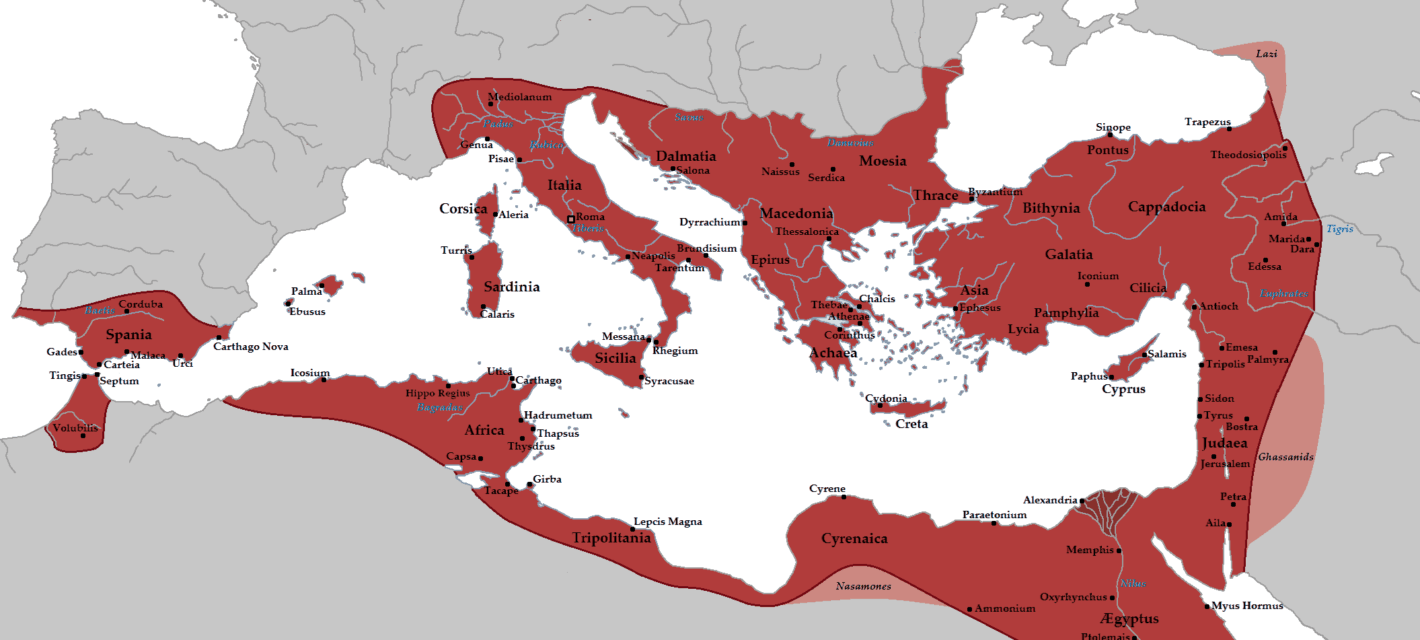The Byzantine Empire, Rome’s empire in the east, lasted over twice as long as its more famed Western counterpart but relatively little is known about it. By the 3rd century AD, the Romans had conquered a number of territories in the Mediterranean, North Africa and Southwestern Europe. However, the sheer reach of the empire became too much to handle, especially with the growing instability in Western Europe which was taking up a lot of resources.
From 285 AD onwards, there were attempts to share power with one individual taking care of matters in the West while another ‘Emperor’ handled things in the East. In 330, Constantine I decided to make Constantinople the new seat of the Roman Empire; it could be said that this was the real starting date of the Byzantine Empire. While the Western Roman Empire crumbled and fell by 476, the Byzantine one flourished and lasted until 1453 when Constantinople was finally taken by the Ottomans.
The Byzantine Empire lasted over 1,100 years and in this article, I will look at 7 reasons for its longevity. While it is not an exhaustive list, it does cover the majority of the most pertinent reasons.

1 – Constantinople
You could say an empire is never truly finished until its capital city has been taken. Constantine I chose well when he picked Constantinople as the new seat of the Roman Empire as it was extremely difficult to conquer. It wasn’t taken until rampaging Crusaders sacked it in 1204 after a lengthy siege. Almost another 250 years passed before it finally ‘fell’ which officially signified the end of the Byzantine Empire.
Its location was one of the reasons why Constantinople was so tough to sack. It stood on a rocky peninsula and attacking it from the sea was exceptionally difficult. The Golden Horn estuary was an excellent place to take shelter while the strong currents of the Bosporus caused enemy ships all manner of trouble. During lengthy sieges, the inhabitants could receive supplies via the sea. The Byzantines knew that enemies would have to take the Golden Horn to have a chance of sacking the city so they placed a 300m long chain to protect it. There were also various sea walls built and they only failed the city once; during the Fourth Crusade.
There was only one way to attack Constantinople by land so they were able to focus on creating an almost impenetrable barrier. In 412, building of the Theodosian Walls (named after Emperor Theodosius II) began. The walls were 6km long and eventually surrounded by a 20m wide x 7m deep moat. There were approximately 90 watchtowers spread around the walls. The main wall was 12m high and 6m thick while a second wall was built later which was 9m high and surrounded the first one! While there were a few vulnerabilities, enemies were never able to take full advantage.
When parts of the wall were destroyed in an earthquake in 447 and Attila the Hun was on his way to attack the city, the Byzantines managed to complete a rebuild with the aforementioned second wall and moat added in just 60 days! Add in the awesome weaponry possessed by the empire (which I’ll cover later) and you have an incredibly well-protected city!
Also Read: Glorious Rise and Brutal Fall of Constantinople.

